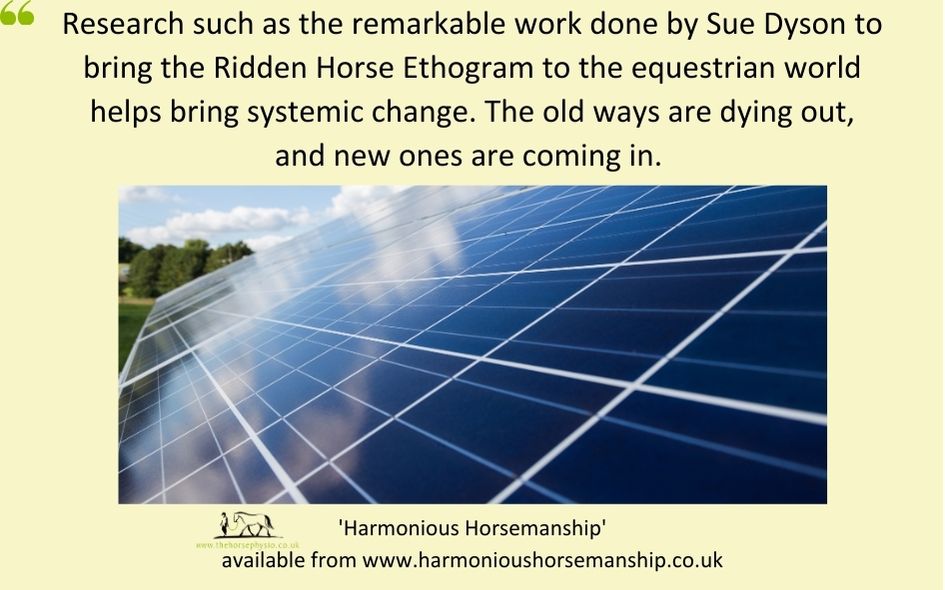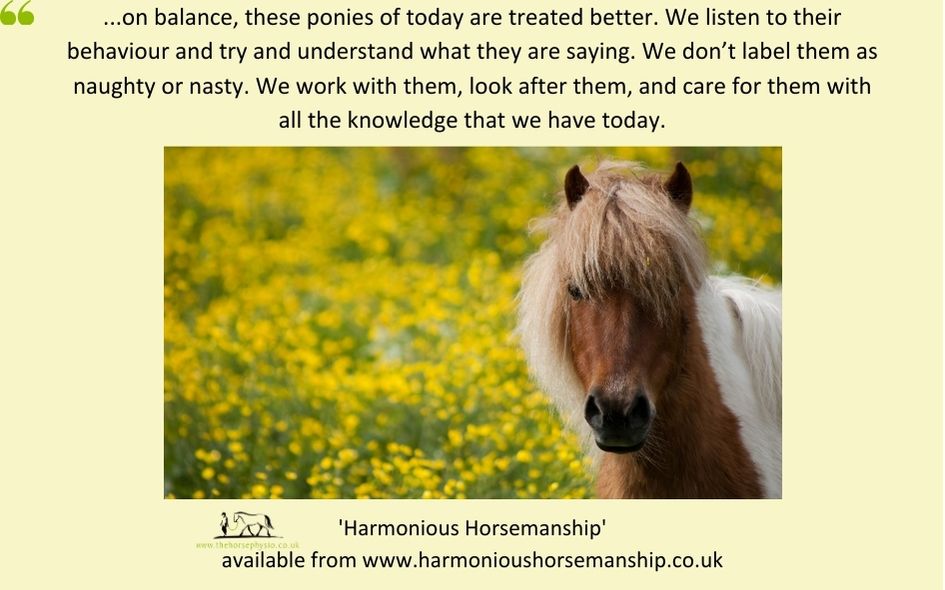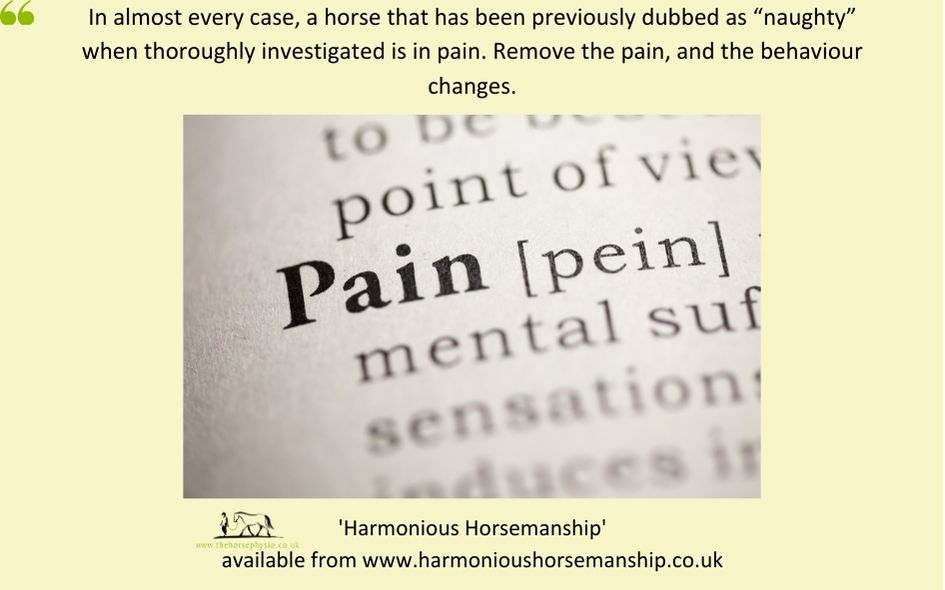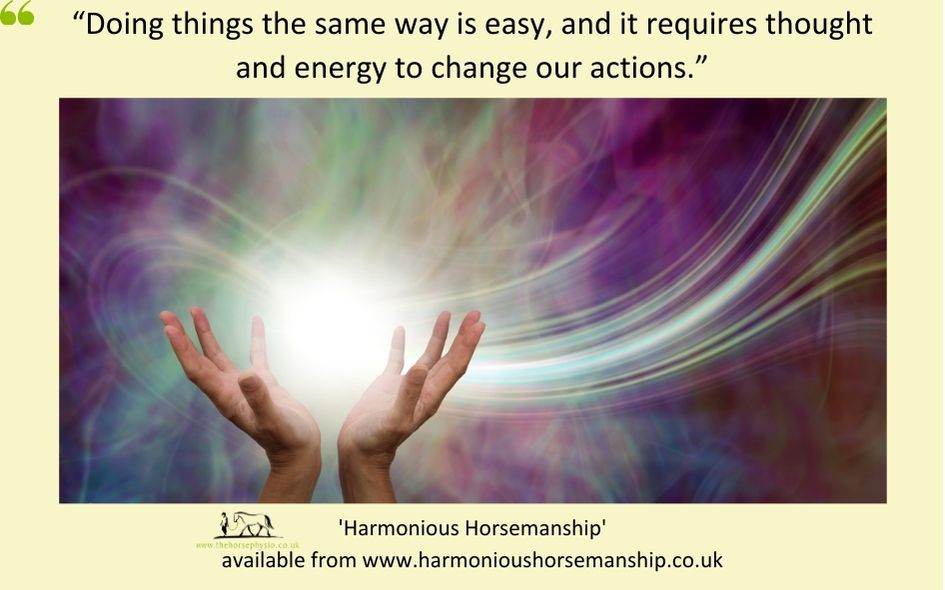Stuck in the past, you’ll get what you always got
Some people remain stuck in the past. They remain hemmed in by the old ways of doing things. Doing things the same way is easy, and it requires thought and energy to change our actions. As people, we are habitual creatures; we like to sit in the same seats and follow the same routines (not everyone, but as a general rule, we are creatures of habit.) The same applies to our horsemanship. We tend to do what we have always done. If we have always told our horse off for putting its ears back when we do up the girth, then we will do it automatically. It is not that we don’t care about our horse; it is simply that the tramways of our routine blinker us. Many of us learned our horsemanship at Pony Club, under the steely eye of an ancient DC. These habits, these learned behaviours, are entrenched, are decades old, and hold us in the past.
Change is inevitable if you do what you always did
But change can and should happen. Research such as the remarkable work done by Sue Dyson to bring the Ridden Horse Ethogram to the equestrian world helps bring systemic change. The old ways are dying out, and new ones are coming in. You can see change all around you. Look at parenting. We have all been party to conversations with elderly relatives who comment, “Well, that was how we did it, and you turned out okay.” But they were parenting in a different world, and the acceptable nuances of parenting in those days are no longer acceptable. Children should be seen and not heard, children should be obedient, children should play out in the street until dark, and children can be left in a car outside a pub with a can of pop and a packet of crisps … like I say, it’s a different world now.

Thirty years ago, ponies had a saddle that had been passed around, a snaffle for most or a pelham if it pulled. They hacked to shows and had no dentistry or physio. If they were naughty, you hit them or got an older kid to ride them. Ponies of today have fitted saddles, bit specialists, horse dentistry, and physios. They can’t hack to shows because the roads are too dangerous; some can’t hack at all. As ever, good and bad. But on balance, these ponies of today are treated better. We listen to their behaviour and try and understand what they are saying. We don’t label them as naughty or nasty. We work with them, look after them, and care for them with all the knowledge that we have today. That knowledge did not exist in the past, and we will know more in the future. Remember, all you can do is do the best you can with the information that you have at this time.

The difference between a genuine change and a trend
A note of caution. As change happens, we tend to react strongly against the ‘old’ way and strike off wildly in the other direction. What we are looking for is a sensible middle ground. We want to listen to our horses, not allow them to rule over us. Certain schools of thought don’t teach boundaries and respect to horses or children, and the results can be dangerous and worrying. Trends always emerge, but long-term change is a slow burner. It’s a gradual curve, a painstaking systemic shift in thoughts, opinions, and understanding, and we are working with this. We are driving change from seeing your horse’s behaviour as bad or good to listening to what your horse is saying to you.
How the RHpE is a change-driver
To give it its full title, the Ridden Horse Pain Ethogram (also known as the Ridden Horse Performance Checklist or the RHpE) is a scientifically researched framework to assess whether your ridden horse is in pain. Certain behaviours indicate discomfort, and when your horse is exhibiting eight or more out of the list of 24 behaviours, research shows that it is likely to have musculoskeletal pain. The RHpE is re-framing people’s thought processes, so now, rather than seeing the horse’s behaviour as “naughty”, they can assess whether the horse is in pain. In almost every case, a horse that has been previously dubbed as “naughty” when thoroughly investigated is in pain. Remove the pain, and the behaviour changes.

How can I learn more?
If you want to be part of the change towards listening to your horse, then the RHpE is an excellent place to start. The RHpE has been designed so everyone can use it: owners, trainers, and professionals. We advise that you carry out the RHpE regularly to assess any changes in behaviour. To learn more about the RHpE and order your copy of Harmonious Horsemanship, the excellent book by Sue Dyson and Sue Palmer, which explains the RHpE and how to use it, visit the website.

